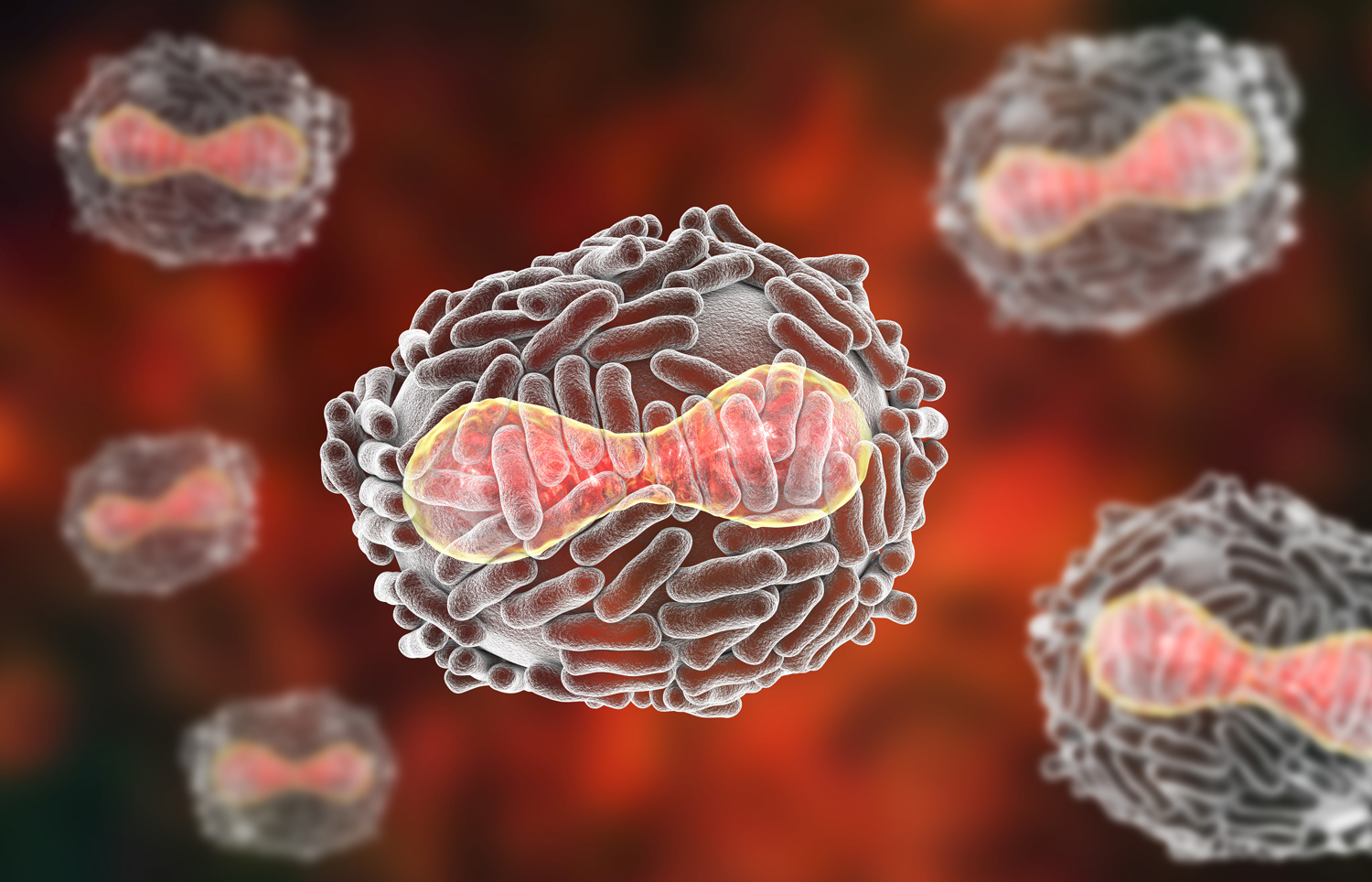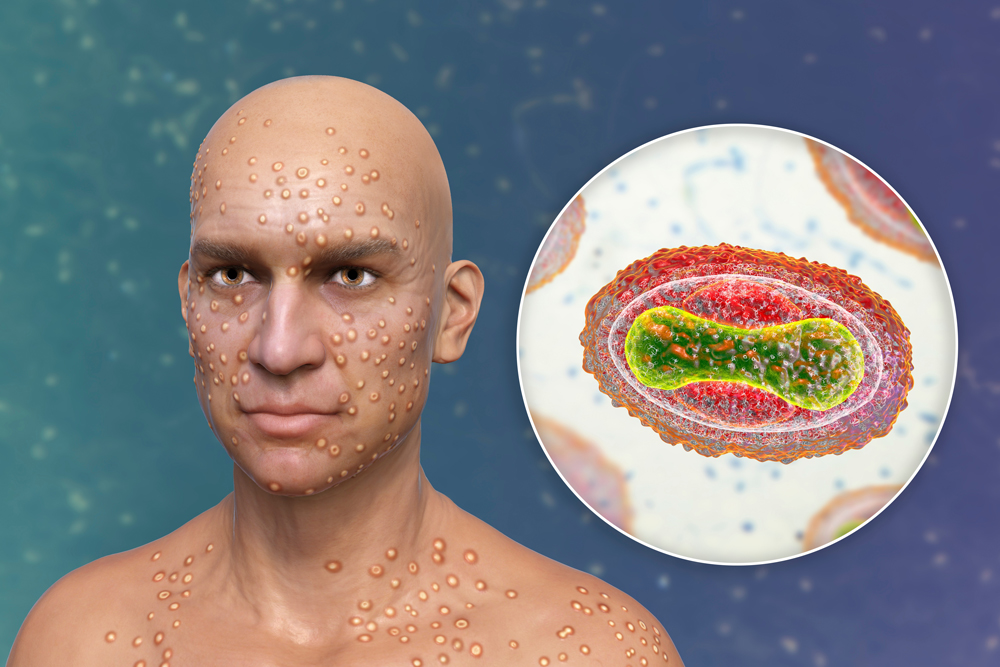Smallpox (Variola Major) – ZL
Thousands of years ago, the variola virus emerged and began causing illness and deaths in human populations, with smallpox outbreaks occurring from time to time. The World Health Assembly declared smallpox eliminated in 1980, and no naturally occurring smallpox cases have happened since then.
- Smallpox Biological Agent Description
- Smallpox Historical Background
- Smallpox Plague Usage
- Smallpox Transmission & Dispersion
- Smallpox Exposure Symptomology
- Smallpox Infection Treatments
- Response & Protection Actions Against Smallpox
- Did You Know?
- Smallpox Fact Box
- Download Envi Assay System Datasheet
Smallpox Biological Agent Description
Smallpox’s origin is unknown. Historical findings indicate that the disease has been existing for over 3,000 years. Written descriptions of the disease can be found in China 4th century (A.D.), 7th century in India and in Asia Minor in 10th century.
Smallpox, caused by variola major virus, is a contagious disease that spreads from person to person. Smallpox patients become contagious once the first sores appear in their mouth and throat. The virus can also spread through contaminated materials or objects such as bedding or clothing. Smallpox spread through the air in an enclosed building is rare. Smallpox can be spread by humans only.

3d rendering of variola virus, a virus from Orthopoxviridae family that causes smallpox, a highly contagious disease considered eradicated by vaccination in 1980.
Scientists have no evidence that smallpox can be spread by insects or animals. Most people will recover from the smallpox, but about 30 percent of the infected people will die. Many of the survivors will carry scars all over their body for the rest of their life and others will be left blind.
Smallpox Historical Background
Early-years trading and the “globalisation” process contributed to the slow spread of smallpox around the globe. In the 500’s, the trade between China and Korea brought the agent to Japan. In the next century, Arabs spread the disease into northern Africa, Spain and Portugal. Crusaders spreade the new “souvenir” in Europe during the 1000’s. The European expansion period and settlers brought the smallpox to western Africa in the 15th century and in the 16th century via African slave trade into The Caribbean and Central and South America. The smallpox spreading continued with European settlers in North America thoughout the 1600’s and in 1700’s in Australia.
English doctor Edward Jenner noticed in 1776 that cowpox was protected from smallpox. He made practical testing of his theory on a 9-years old boy by inoculating him with cowpox soar and 1 month later exposed him several times to variola major. The boy never developed smallpox. After various experiments he published in 1801 his treatise: “On the origin of the vaccine inoculation”. During 1800’s practice of variolation was replaced with vaccination containing cowpox virus.
Smallpox was eliminated in North America in 1952 and in the next year in Europe. The World Health Organization (WHO) started a plan to eliminate the smallpox in 1959. Due to the lack of funding, personnel, and committed countries, and shortage of vaccine donations, there were regular smallpox outbreaks in 1960’s in South America, Africa and Asia. In the 60’s the campaign started to gain efforts. In 1971 the disease was eliminated in South America, in 1975 in Asia and in 1977 in Africa.
On the 8th of May 1980 the 33rd World Health Assembly declared the world free of smallpox.
Smallpox Usage
There are speculations that the British forces used “biological weapons” as part of the Siege of Fort Pitt in June 1763 when they gave smallpox contaminated blankets to American Natives as gift of ending their siege. As one witness wrote later about that event “Out of our regard to them we gave them two blankets and a handkerchief out of the Small Pox Hospital. I hope it will have the desired effect”.
The Soviet Union had large scale programs of biological weapons development that were conducted at dozens of secret sites, employing up to 65,000 people. In 1971 a weaponised smallpox outbreak occurred, during a testing at the Vozrozhdeniya Island (Aralks-7 – “Rebirth Island”) in the Aral-sea. After that, there were mysterious cases of mortality in Aralsk-city and when a lab-technician came too close to the island to take samples from the sea, she got it and infected other people with the variola major when returned to Aralsk. In total 10 people were infected and three died but the epidemic was prevented.
In 1981 four countries were actively working with variola virus. By 1984 England and South-Africa either destroyed their stock or transferred it to other approved labs. Nowadays, there are only two official storage places and handling of the virus, under WHO supervision: the Centers for Disease Control and Prevention in Atlanta, Georgia, and the State Research Center of Virology and Biotechnology (VECTOR Institute) in Koltsovo, Russia.
There are no registers of bioterrorist attacks using smallpox in modern times.
Smallpox Transmission & Dispersion
Smallpox ¨spreads mainly by direct and fairly prolonged face-to-face contact between people. After the first symptoms the virus spreads via cough, sneeze and droplets from nose or mouth. The virus is contagious until the last smallpox scrab fell off. The virus also spreads via contaminated clothing. Spreading the pathogen in aerosolised form is easy but the main effect and spread is due to the high contagiosity.
If a smallpox bioterrorist attack happens, public health authorities would find out once people started getting sick. The medical staff would try to rule out other more common illnesses first.
Smallpox Exposure Symptomology
Smallpox incubation period varies between 7 to 19 days, although the average length is 10 to 14 days. During the incubation time the virus is not contagious. The initial symptoms are high fever, body aches, and sometimes vomiting, and lasts from 2 to 4 days. The early rash takes about 4 days and then the virus starts to be contagious. First there are small red spots on the tongue and in the mouth, before these sores break open. After the mouth’s spores are open, a rash appears on the skin starting from face and moving to arms and legs. This spreading takes usually 24 hours. The fever begins to decline and person may feel better. Once the skin sores are filled with fluid, the fever may rise again.

The virus starts to be contagious about 4 days after the first early rash. Then there are sporeas affecting the tongue and month. After the mouth’s spores are open, a rash appears on the skin starting from face and moving to arms and legs. Only about four weeks after rash appears all scabs have fallen off and the person is no longer contagious.
Pustular rash and scrabs stage lasts about 10 days. The sores become pustules. After 5 days the pustules begin to form crust and then scab. After this stage scabs starts to fall off and this takes about 6 days. Three weeks after the rash, most of the scabs have fallen leaving marks on the skin. About four weeks after rash appears all scabs have fallen off and the person is no longer contagious.
Smallpox Treatments
There are vaccines to protect people from smallpox. Currently, smallpox vaccines are not recommended for the general public because smallpox has been eradicated. Some antiviral medicine may help treat smallpox disease, but there is no dedicated smallpox treatment that has been tested in people who are sick and proven to be effective.
Response & Protection Actions Against Smallpox
All infected people must be isolated, and all of those who were in contact with the infected person have to be in quarantine for at least 17 days.
The minimum protective equipment requirements are mask with FFP-3 filter, gloves, protective goggles, protective suit and boots. The sample analysis must be at least security level BSL-4 laboratory.
The risk of re-aerosolization of smallpox virus from a contaminated person is considered low. In situations where there may have been gross exposure to smallpox, personal decontamination can be performed by removing contaminated clothing and washing exposed skin with soap and water.
Did You Know?
In 1975, three-year-old Rahima Banu from Bangladesh was the last person in the world to have naturally acquired variola major. She was also the last person in Asia to have active smallpox. Janet Parker was the last person to die of smallpox. In 1978, Parker was a medical photographer at England’s Birmingham University Medical School.
Smallpox has also UN 2814 number for infectious substances affecting humans.
Smallpox Fact Box
| Agent type | Virus |
| Infectiousness | Very High (highly contagious) |
| Person-to-Person | Yes |
| Incubation period | 8 – 18 days |
| Infectious dose (aerosol) | 10 – 1000 virus particles |
| ENVI Assay Sensitivity | 3,5 x 104 CID50/ml sample buffer |
| Lethality | High |
| Therapy | Vaccine, no specific treatments |
ENVI Assay System
Bertin Environics’ ENVI Assay System bio defence tests is the ideal tool for provisional identification of Biological threats. These high quality and proven tests for early detection are the most compact immunoassay “lab-in-a-box” in the market.

Disposable, separate assays for seven highly poisonous hazardous agents: ricin toxin, botulinum toxin, Bacillus anthracis anthrax, orthopox virus, SEB, Yersinia pestis and Francisella tularensis.
How does smallpox, caused by variola major virus, spread among individuals, and what are the common modes of transmission?
telkom university
Thank you Ilmu Forensik from Telkom University for you questions.
Smallpox mainly spread by direct and fairly prolonged face-to-face contact between people. Smallpox patients became contagious once the first sores appeared in their mouth and throat (early rash stage). They spread the virus when they coughed or sneezed and droplets from their nose or mouth spread to other people. They remained contagious until their last smallpox scab fell off. These scabs and the fluid found in the patient’s sores also contained the variola virus. The virus can spread through these materials or through the objects contaminated by them, such as bedding or clothing. People who cared for smallpox patients and washed their bedding or clothing had to wear gloves and take care to not get infected. Rarely, smallpox has spread through the air in enclosed settings, such as a building (airborne route). Smallpox can be spread by humans only. Scientists have no evidence that smallpox can be spread by insects or animals.